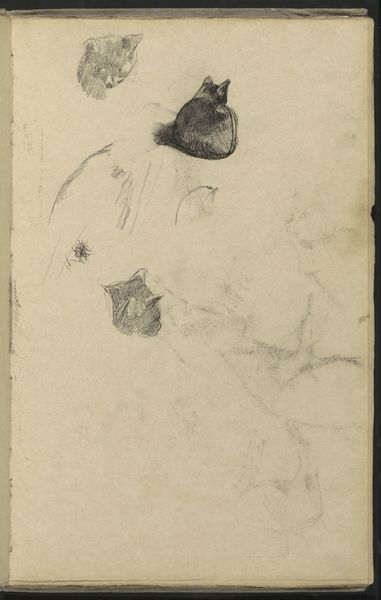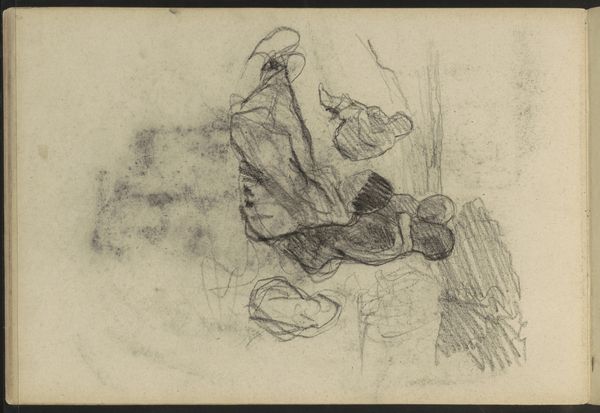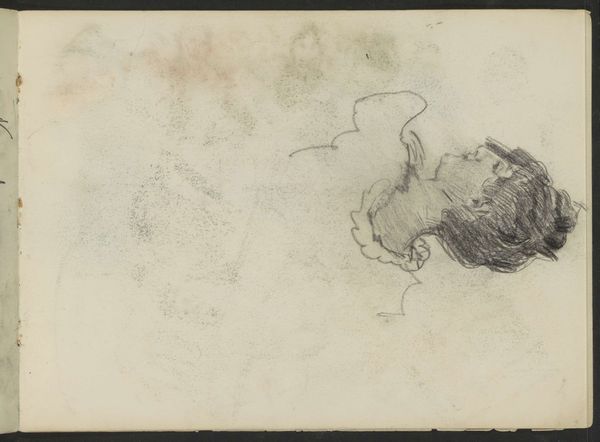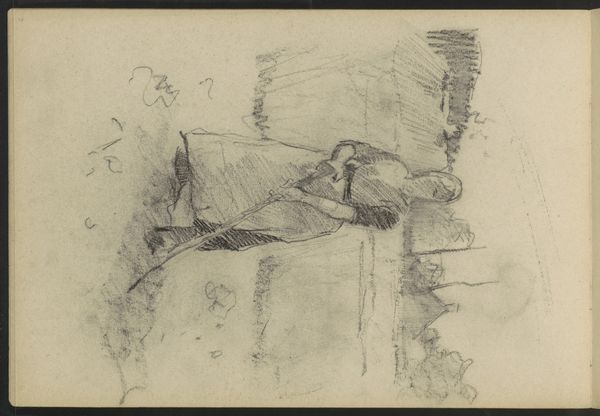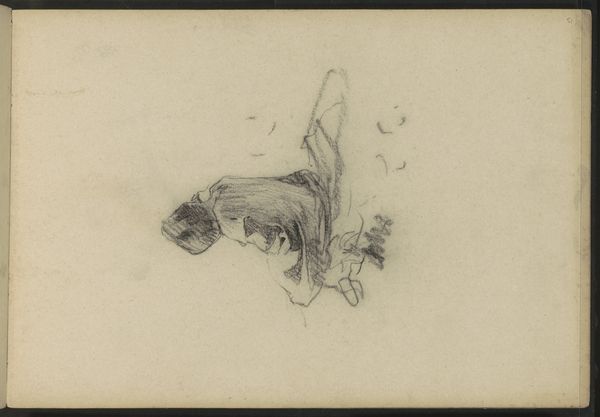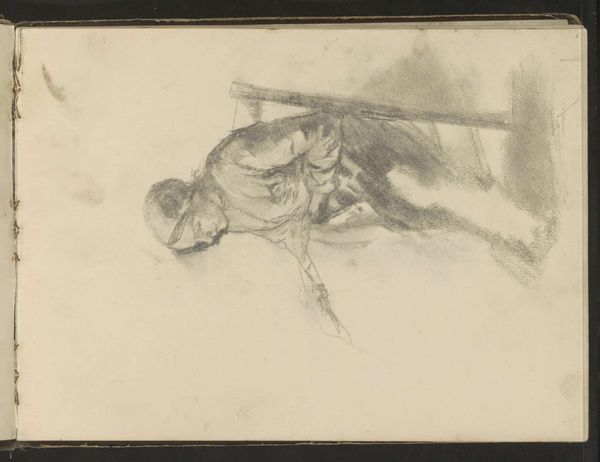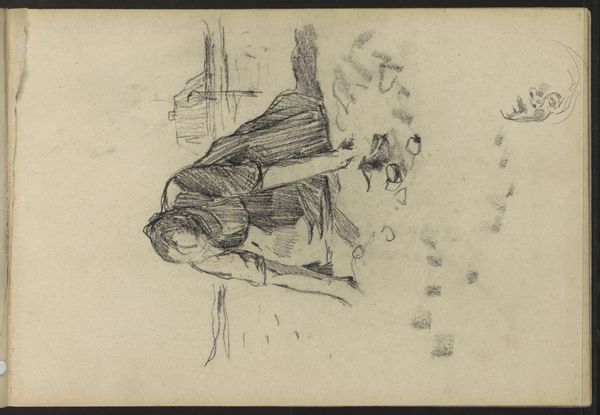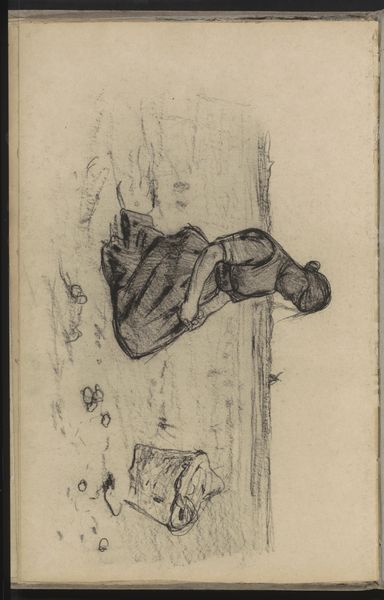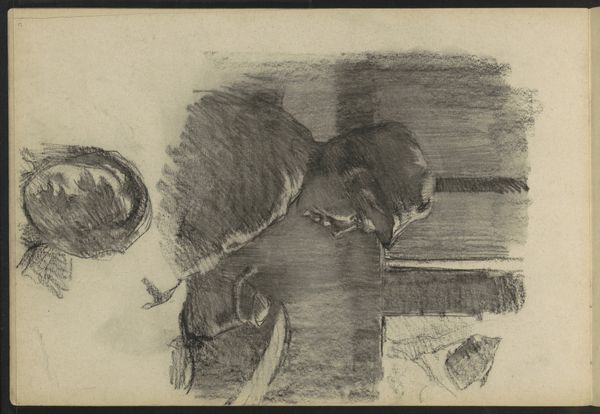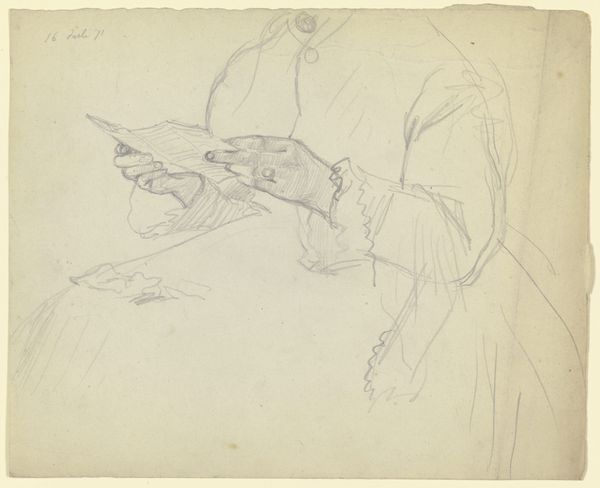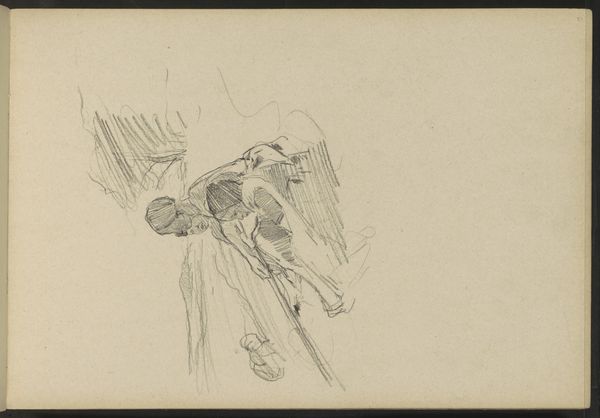
#
amateur sketch
#
toned paper
#
light pencil work
#
pencil sketch
#
incomplete sketchy
#
personal sketchbook
#
ink drawing experimentation
#
pen-ink sketch
#
sketchbook drawing
#
sketchbook art
Copyright: Rijks Museum: Open Domain
Curator: This is "Zittend Meisje," or "Seated Girl," a drawing by Willem Witsen from around 1884 to 1887, here in the Rijksmuseum. Editor: There's a haunting tenderness about this image. The light pencil work makes the figure almost ethereal, a fleeting vision captured on toned paper. Curator: Indeed. Witsen employed quite delicate pen-ink sketches in his sketchbooks and studies of figures; here, the labor is visible. You can almost see the quick strokes that build up the form of the seated girl. What sort of production do you suppose surrounded these amateur sketches? Editor: She is so unassuming. Given that Witsen seems to be practicing the human form, is there some correlation between how she's slumped, and perhaps even how "the fallen woman" was portrayed? Is it simply an attempt to capture a momentary state, or is there something more? The bent head—what symbolism might the piece evoke? Curator: What’s intriguing is the intended audience. Personal sketchbook art is rarely meant for display. Was he simply experimenting with technique, working out spatial relationships? The means were modest—paper, pencil—yet the resulting image suggests profound emotional and psychological reflection. How did his production materials affect the final output? Editor: Her face is hidden; there is the symbolism in obscuring one's vision or sight? It reminds me of depictions of melancholy. It makes me think of a much younger Hamlet holding Yorick's skull! Is the aim really realism? I am curious whether he was playing with these very symbols himself. Curator: Ultimately, this seemingly simple sketch speaks volumes about the artistic process. It forces us to acknowledge the materials, the labor, and the artist's relationship to the work. Editor: And it asks us to consider the enduring power of posture, of light, and of suggestion in triggering profound emotional resonances that stretch across history and art history.
Comments
No comments
Be the first to comment and join the conversation on the ultimate creative platform.

